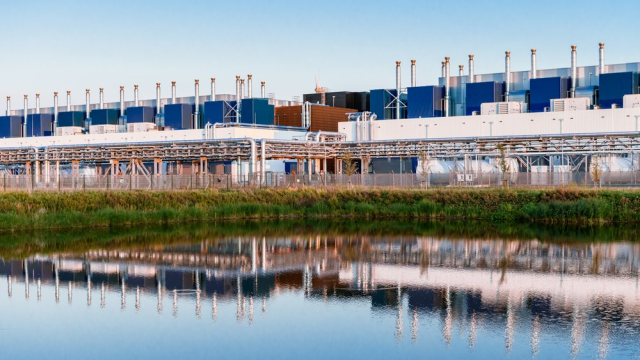Just as oil companies laud their plans to address climate change, tech companies also tend to sound off about their respective efforts to be more environmentally sound. Sometimes they don’t wholly add up either.
Google is the latest tech giant to announce its commitment to the Earth, this time through water conservation. The company said plans to replenish 120% of the water it consumes by 2030. Microsoft and Apple have made similar pledges.
Google explained in an official blog post that it’s been working on a plan for years to cut down water use, which it uses primarily to cool down its data centres. It started with its servers in Douglas County, Georgia, where the company previously came under scrutiny for using regular drinking water. (It now uses reclaimed wastewater.) And in the San Francisco Bay Area, a part of a state enveloped in the West’s unprecedented megadrought and where farmers have been facing water restrictions, Google is working with ecologists and architects to help “improve the resiliency” of the water landscape surrounding other server farms. In the post, here’s what the company had to say about its efforts:
“Our water stewardship journey will involve continuously enhancing our water use and consumption. At our data centres, we’ll identify opportunities to use freshwater alternatives where possible — whether that’s seawater or reclaimed wastewater. When it comes to our office campuses, we’re looking to use more on-site water sources — such as collected stormwater and treated wastewater — to meet our non-potable water needs like landscape irrigation, cooling and toilet flushing.”
Water cooling is an efficient way to keep a mass of data servers at an operational temperature. You can imagine how many gallons of water Google uses to power up every Gmail, YouTube, Google Maps, and Search query. (If you can’t imagine, the answer is billions.) These are, of course, part of the same suite of products you’d use to help yourself navigate a water-based climate emergency. Just the other day, I was looking up how many gallons of water my family and I would have to ration if we were to face mandatory water restrictions, something afflicting some communities and farmers that rely on Lake Mead. (“Water restrictions” has become an increasingly popular search in the U.S. this year, so it appears I’m not alone.)
Using wastewater for the “evaporative cooling” effect that Google employs to cool the air around its servers is more sustainable than potable water. So, too, are Google’s efforts to use seawater and other forms not fit for human consumption. But the promise to replenish 120% of the water seems dubious, considering there is no specific plan to use less water. For example, it takes about 1.25 million gallons of water a day to cool down the data centres located in Mesa, Arizona, and as internet access spreads, so too will the need for more water-hungry data centres.
That is more gallons of water than some town reservoirs have in their emergency supply. And in parts of the country where water is scarce, it’s a big tradeoff to give it to a data centre when there’s a struggling community sharing the supply nearby. Google has said it will replenish water in the “regions” it operates, but what counts as replenishment and how big a region is are key factors in determining what communities and what ecosystems will end up benefitting.
While Google’s environmental efforts are certainly a step in the right direction, it’s hard to see them as a long-term solution. After all, most of Google’s business operates from the cloud, facilitated by servers churning away on an increasingly water-stressed planet. In some ways, Google’s pledge is no different from the oil industry buying carbon offsets to diminish its environmental damage. On a planet where 1.8 billion people live in countries facing extreme water stress, the risk of disaster increases.
Google has seen pushback from communities about its data centres’ water use, though it’s still managed to operate and even expand in those places. TBD on if the 120% pledge will move the needle. A corporate pledge, though, can only go so far. To ultimately solve our water scarcity problem, policies to conserve it in the first place.
